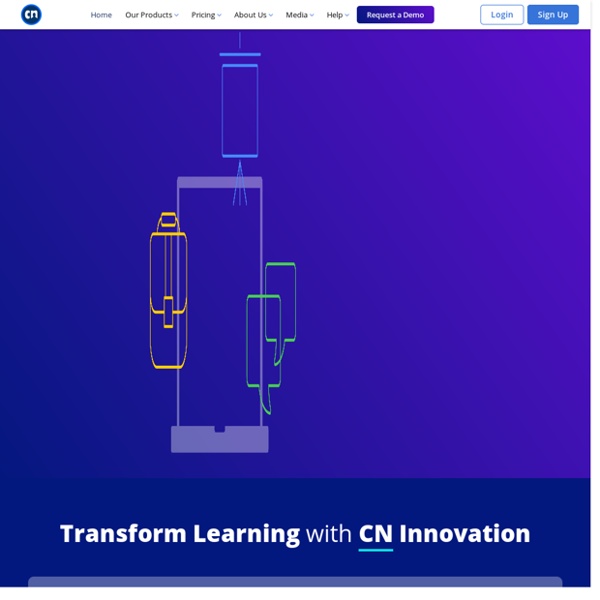



Best Practices for Teaching Online January 29 Designing Effective Team Projects in Online Courses By: Stephanie Smith Budhai PhD Participating in team projects offers students the chance to develop interpersonal communication skills (Figueira & Leal, 2013), build relationships with classmates, and increase the level of collective competencies as each group member brings something different to the group. However, in the online environment where the majority of the work occurs asynchronously, students may resist having to work with others (Smith et al., 2011) on graded assignments.
tricider - Brainstorming and Voting Find the best solution by involving your friends, colleagues or clients. A feedback session with customers or the decision on the new logo. tricider is the easiest way, to gather all opinions and ideas. It´s brainstorming and voting, all in one and online! Even hard decisions can be easy with tricider. Free and no registration. Save time - discussing and voting online.
Blended and Flipped Learning Archives - Faculty Focus June 15, 2015 Flipping Assessment: Making Assessment a Learning Experience By: Susan Spangler PhD Lecture Capture: A New Way to Think about Hybrid Courses - Faculty Focus “Hybrid education” has become a hot catchphrase recently as faculty blend face-to-face learning with online technology. But the growth of hybrid education has been steered by the unstated assumption that hybrid technology should be used to facilitate discussion outside of the classroom, while classroom time should be spent lecturing. Now José Bowen, dean of the Meadows School of the Arts at Southern Methodist University, challenges this assumption by asking his faculty to put their lectures online and devote face-to-face classes to discussion. His logic is impeccable.
Using Blended Learning to Transform the Classroom Experience - Faculty Focus When we maintain our focus on learning, the means used to help students learn dominates our thinking. Too often teachers can fall into the trap of testing students only on lower-level material (knowledge and comprehension questions). When exams become the only means to assess learning, a teacher becomes a carpenter with only a hammer: all problems start to seem like nails. Blended courses offer a way to move beyond a midterm and a final. By combining the benefits of online instruction with the advantages of face-to-face instruction, you might improve learning in your course in ways that are impossible to achieve using only face-to-face meetings or only online resources.
Blended Learning Course Design Mistakes to Avoid Blended learning course design entails more than simply converting content for online delivery or finding ways to supplement an existing face-to-face course. Ideally, designing a blended course would begin with identifying learning outcomes and topics, creating assignments and activities, determining how interaction will occur, and selecting the technologies to best achieve those learning outcomes. However, a variety of constraints often affect the way blended courses are developed, which can compromise their quality.
Private Journal Replaces Discussion Forum in Blended Course The discussion board in Kathleen Lowney’s large blended (or hybrid) section of introduction to sociology at Valdosta State University wasn’t serving its intended purpose of engaging learners with the content and preparing them for face-to-face class sessions. She tried dividing the students into smaller discussion groups of 50 and then 20, and the results were the same: the weaker students waited until the last minute and essentially repeated what the better students had posted previously. When she replaced the public discussions with private journals, the quality of students’ posts improved, as did their grades. Lowney’s course is a “supersection” hybrid that has an enrollment of 150 to 300 students and meets Tuesdays and Thursdays with a significant online component.
Designing Blended Courses the ADDIE Way Editor’s Note: The following is an excerpt from Ten Strategies to Improve Blended Course Design. Blended learning does not simply involve shifting portions of face-to-face instruction online. Ultimately, a blended course will require reconceptualization of the entire learning process. That’s where ADDIE comes in.
Blended Learning: Integrating Online and Face-to-Face Courses December 12th, 2013 By: Rob Kelly Blended learning entails more than simply replacing class time with online course elements or supplementing an online course with face-to-face meetings.